|
Printables |
PowerPoints |
Online exercises |
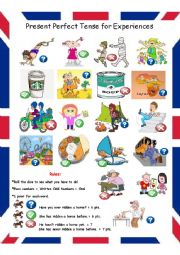
|
Present Perfect Tense for Experiences
An enjoyable speaking and writing supplement to reinforce asking questions, answering using both affirmative and negative sentences. To get a mixture of both oral and written work I normally have something small enough to hide in my hand. If the object is in the hand not selected, they have to write the sentence. To encourage students, I usually gi...
Level: elementary
Age: 9-100
Type: activity-card
Downloads: 271
|
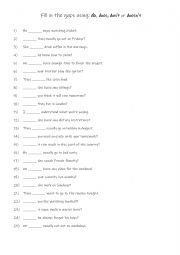
|
Fill in the gaps using: do, does, don�t or doesn�t
Students read and complete the sentences / questions using the correct form of auxiliary verb do. Answers are on page 2
Level: elementary
Age: 10-100
Type:
Downloads: 128
|
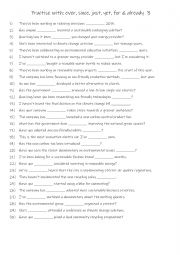
|
A2+-B1 Practise with ever, since, just, yet, for & already 3
First, students need to familiarise themselves with the 6 adverbs and their use. Then they read the sentences to work out which one is needed to complete the gap-fill. Each adverb is used 5 times! Answers on page 2.
Level: intermediate
Age: 10-100
Type:
Downloads: 114
|
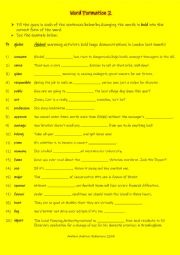
|
Word Formation Activity (2) for students studying IELTS Band 4.5 - 5 or FCE
I designed this worksheet for lower level IELTS and FCE students as a way to practise and to improve their written work by using the correct form of the word. Students need to transform the words in bold at the start of each sentence into either a Noun, Verb, Adjective,Adverb or Prefix to complete the sentences. An answer key is included.
Level: intermediate
Age: 14-100
Type:
Downloads: 311
|
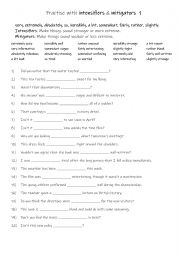
|
B1-B2 Practise with intensifiers & mitigators 1
Students should learn to use intensifiers and mitigators to communicate more precisely, fluently, and naturally. Intensifiers make statements stronger, while mitigators soften them, allowing for nuanced expression of emotions and opinions. Mastering these tools improves writing, speaking, and listening skills, helping students adjust language based...
Level: intermediate
Age: 10-100
Type:
Downloads: 140
|
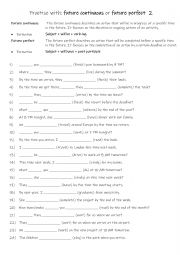
|
A2+-B1 Practise with future continuous or future perfect 2
Students should learn the future continuous and future perfect tenses as they are essential for discussing future actions with precision. The future continuous is used to describe actions that will be in progress at a specific time in the future, making it ideal for expressing plans, predictions, or expectations (e.g., This time tomorrow, I�ll be t...
Level: elementary
Age: 9-100
Type:
Downloads: 102
|
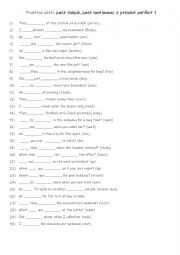
|
A1+ A2 Practise with past simple, past continuous & present perfect 1
Mastering past simple, past continuous, and present perfect is essential for clear and accurate communication in English. The past simple is used for completed actions with a specific time reference, such as "I visited London." The past continuous describes ongoing actions at a specific moment in the past or sets the scene, like "I was reading when...
Level: elementary
Age: 8-100
Type:
Downloads: 122
|
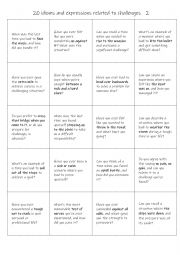
|
B1+-C1 20 idioms and expressions related to challenges 2
This is a speaking reinforcement activity to supplement the other worksheet I uploaded on 22/1/2025. Students working in pairs or small groups can either ask each other the questions or answer the question themselves.
Level: intermediate
Age: 11-100
Type:
Downloads: 117
|
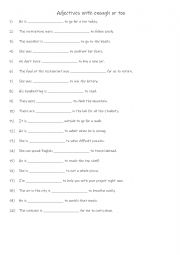
|
A2-B1 Adjectives with enough or too 3
Students read the sentences and using a suitable adjective they complete the sentences using either enough / too. Answers on page 2.
Level: intermediate
Age: 7-100
Type:
Downloads: 106
|
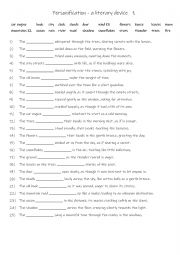
|
B2-C1 Personification - a literary device 1
Learning personification helps students bring their writing to life by giving human qualities to non-human things, making descriptions more engaging and relatable. It enhances creativity, allowing them to craft vivid imagery and evoke emotions in their readers. Understanding personification also deepens their appreciation of literature, as it is a ...
Level: advanced
Age: 15-100
Type:
Downloads: 112
|
|
|
|
|












